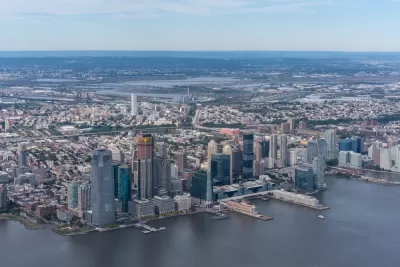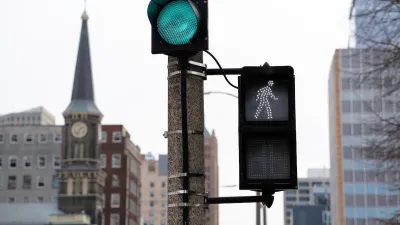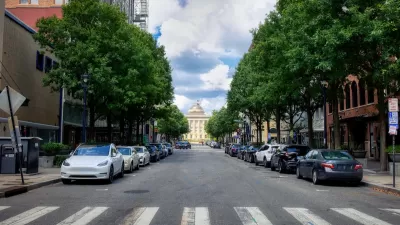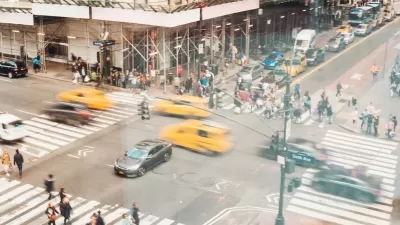The city has gone a full year with no traffic deaths while road violence in the rest of the country continues to grow.

Bucking a nationwide trend, Jersey City eliminated traffic deaths on its city-managed roads for a full year. As John Surico explains in Bloomberg CityLab, the city used innovative tools such as mini-roundabouts to slow down traffic at dangerous intersections and small-scale, low-cost pilot programs to test interventions before making them permanent. “And local leaders are intent on pushing forward with more improvements that will eventually encompass more of the city and region.”
Jersey City is the rare municipality that has embraced the spirit of tactical urbanism — a practice where quick DIY fixes are deployed to nudge officials to make more permanent changes.
Thanks to its targeted investments in improving its bike infrastructure, the city has also seen a rise in cycling. “This last quarter, Citi Bike, which operates in Jersey City, saw usage increase to more than 15,000 peak rides per week on average.”
Jersey City’s success in improving traffic safety could be replicated in other cities, but comes with some caveats. “So far, most of the city’s interventions have been downtown, and largely avoided loss of on-street parking,” Surico notes. But addressing the proverbial low-hanging fruit can lead to increased public support and more political will to engage in more controversial projects in the future.
FULL STORY: How Jersey City Got to Zero Traffic Deaths on Its Streets

Study: Maui’s Plan to Convert Vacation Rentals to Long-Term Housing Could Cause Nearly $1 Billion Economic Loss
The plan would reduce visitor accommodation by 25,% resulting in 1,900 jobs lost.

North Texas Transit Leaders Tout Benefits of TOD for Growing Region
At a summit focused on transit-oriented development, policymakers discussed how North Texas’ expanded light rail system can serve as a tool for economic growth.

Why Should We Subsidize Public Transportation?
Many public transit agencies face financial stress due to rising costs, declining fare revenue, and declining subsidies. Transit advocates must provide a strong business case for increasing public transit funding.

How to Make US Trains Faster
Changes to boarding platforms and a switch to electric trains could improve U.S. passenger rail service without the added cost of high-speed rail.

Columbia’s Revitalized ‘Loop’ Is a Hub for Local Entrepreneurs
A focus on small businesses is helping a commercial corridor in Columbia, Missouri thrive.

Invasive Insect Threatens Minnesota’s Ash Forests
The Emerald Ash Borer is a rapidly spreading invasive pest threatening Minnesota’s ash trees, and homeowners are encouraged to plant diverse replacement species, avoid moving ash firewood, and monitor for signs of infestation.
Urban Design for Planners 1: Software Tools
This six-course series explores essential urban design concepts using open source software and equips planners with the tools they need to participate fully in the urban design process.
Planning for Universal Design
Learn the tools for implementing Universal Design in planning regulations.
City of Santa Clarita
Ascent Environmental
Institute for Housing and Urban Development Studies (IHS)
City of Grandview
Harvard GSD Executive Education
Toledo-Lucas County Plan Commissions
Salt Lake City
NYU Wagner Graduate School of Public Service





























